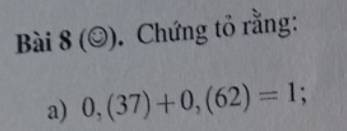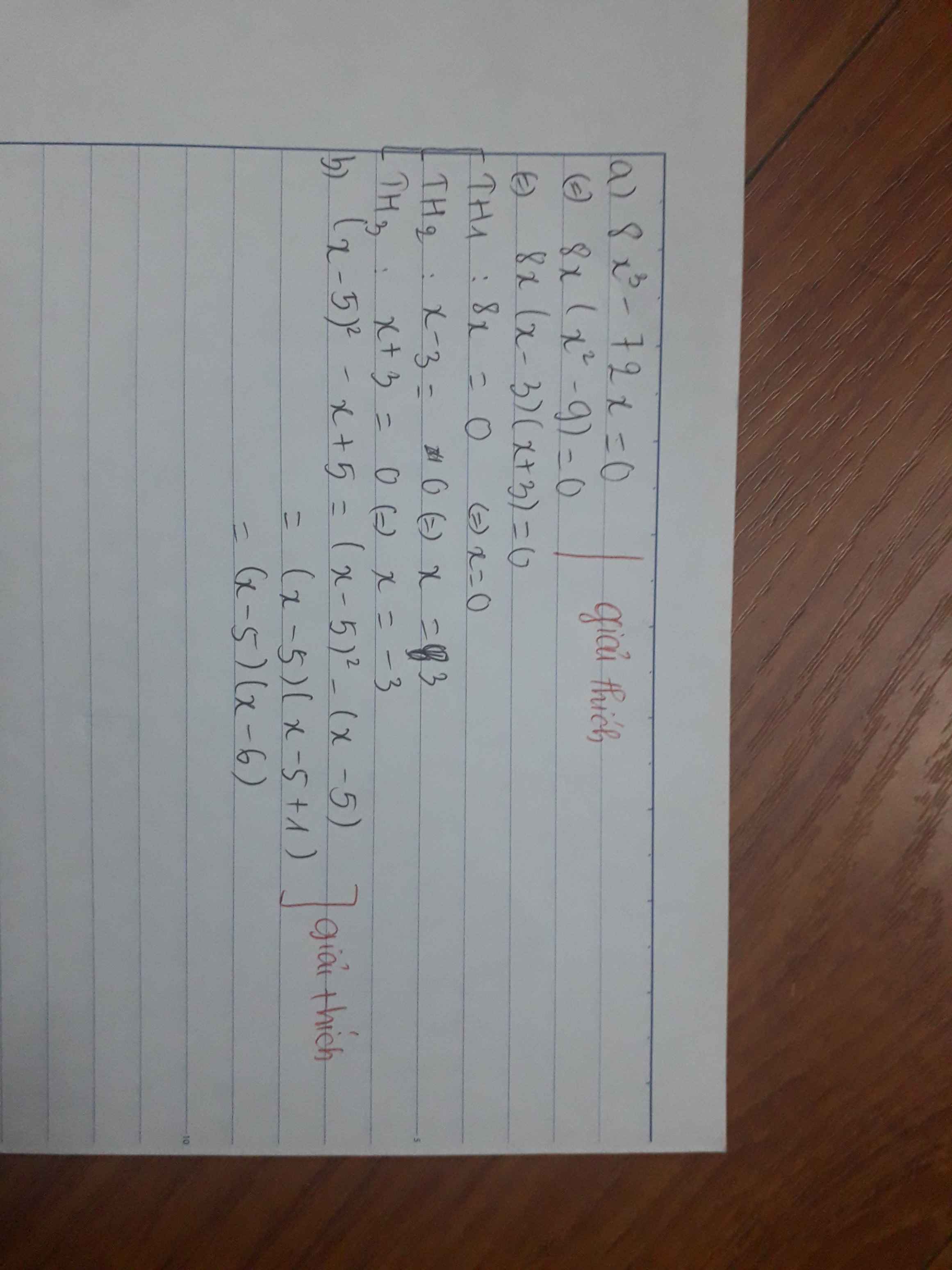làm câu a) ạ, lát e đưa câu b
Hãy nhập câu hỏi của bạn vào đây, nếu là tài khoản VIP, bạn sẽ được ưu tiên trả lời.


a) Các vị trí so le trong, và đồng vị với \(\widehat{mAB}\) là:
\(\widehat{B_1};\widehat{APQ};\widehat{nPA}\)
b) Ta có: \(\widehat{B_1}=\widehat{mAB}=50^o\) (hai góc so le trong)
Mà: \(\widehat{B_1}+\widehat{B_2}=180^o\Rightarrow\widehat{B_2}=180^o-50^o=130^o\)
c) Ta có: \(\widehat{mAB}+\widehat{A_1}=180^o\Rightarrow\widehat{A_1}=180^o-\widehat{mAB}=180^o-50^o=130^o\)
Mà: \(\widehat{mAB}=\widehat{A_2}=50^o\)(hai góc đối đỉnh)
d) Ta có:
\(\widehat{APQ}+\widehat{PQB}=180^o\)
\(\Rightarrow\widehat{PQB}=180^o-\widehat{APQ}=180^o-110^o=70^o\)

a: góc yAt'=180 độ-60 độ=120 độ
góc yAt'=góc yOx
mà hai góc này đồng vị
nên At'//Ox
b: góc mOA=góc xOy/2=60 độ
góc nAO=góc OAt/2=60 độ
=>góc mOA=góc nAO
=>Om//An

\(0,\left(37\right)+0,\left(62\right)\)
\(=\dfrac{37}{99}+\dfrac{62}{99}\)
\(=\dfrac{37+62}{99}\)
\(=\dfrac{99}{99}\)
\(=1\)
Để chứng tỏ một bài, em hãy giải thích tính chất của hai số trong biểu thức nhé: đó là những số thập phân vô hạn tuần hoàn, từ đó chúng ta mới biểu diễn chúng dưới dạng phân số quy tắc.

a: \(A=\dfrac{3n^2+3n}{12n}=\dfrac{3n\left(n+1\right)}{3n\cdot4}=\dfrac{n+1}{4}\)
Vì 4=2^2 ko có thừa số nguyên tố nào khác 2 và 5
nên \(A=\dfrac{n+1}{4}\) viết được dưới dạng số thập phân hữu hạn

góc xOz=góc yOz=90/2=45 độ
Bm//Oz
=>góc mBO+góc BOz=180 độ
=>góc mBO=135 độ
Cn//Oz
=>góc nCy=góc zOy(hai góc đồng vị)
=>góc nCy=45 độ

a: x<a<y
=>102,39...<a<103,02...
=>a=103; a=103,01; a=103,015
b: x<a<y
=>-0,41...<a<0,41...
=>a=0; a=0,2; a=0,3
a, a = 102,4 hoặc a=103 hoặc a= 103,01
b, a=0,4 hoặc a=0 hoặc a=-0,1

Bạn chỉ cần áp dụng cái phân tích đa thức thành nhân tử bằng phương pháo đặt nhân tử chung là ra rồi

b.
\(\Leftrightarrow\dfrac{1}{2}cosx-\dfrac{\sqrt{3}}{2}sinx=-\dfrac{1}{2}\)
\(\Leftrightarrow cos\left(x+\dfrac{\pi}{3}\right)=-\dfrac{1}{2}\)
\(\Leftrightarrow\left[{}\begin{matrix}x+\dfrac{\pi}{3}=\dfrac{2\pi}{3}+k2\pi\\x+\dfrac{\pi}{3}=-\dfrac{2\pi}{3}+k2\pi\end{matrix}\right.\)
\(\Leftrightarrow\left[{}\begin{matrix}x=\dfrac{\pi}{3}+k2\pi\\x=-\pi+k2\pi\end{matrix}\right.\)
c.
\(\Leftrightarrow\dfrac{3}{5}sinx-\dfrac{4}{5}cosx=1\)
Đặt \(\dfrac{3}{5}=cosa\) với \(a\in\left(0;\dfrac{\pi}{2}\right)\Rightarrow\dfrac{4}{5}=sina\)
Pt trở thành:
\(sinx.cosa-cosx.sina=1\)
\(\Leftrightarrow sin\left(x-a\right)=1\)
\(\Leftrightarrow x-a=\dfrac{\pi}{2}+k2\pi\)
\(\Leftrightarrow x=a+\dfrac{\pi}{2}+k2\pi\)








a
Hai góc \( \widehat{ AOM}, \widehat{BON }\) không phải 2 góc đối đỉnh.
Vì \(\widehat{ AOM} \)và \(\widehat{BON } \)chỉ có một cặp cạnh là hai tia đối nhau, cặp cạnh còn lại không đối nhau.